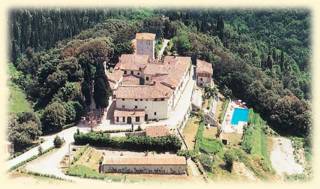
View form the Art Department Helicopter

News and information from St. George's British International School Art Department, Rome, Italy
Research workbook studies
A reminder of what you should be focussing on in your RWBs at the moment
Kim
Group Identities, Boundaries and Borders in Art
How and why do groups of people (nationalities, religions, armies, tribes, gangs, football clubs, companies etc) display their group identities through art and visual imagery? How might groups of people be identified by ‘outsiders’? (think of how you chose to represent countries by food – what other symbols or clichés might work in the same way)
Some Ideas:
Look at propaganda paintings (American ‘Uncle Sam’, British ‘Your Country Needs You’, German, Russian, Italian & Japanese posters from the 2nd world war for example) Soviet Socialist Realism etc
Masks, Uniforms and Costumes from various tribes, groups and societies (from the Masaai and the Spanish navy to the Iroquois and the Ku Klux Klan)
Badges, Logos and Icons – from paintings of crucifixions in an Italian Church to the ‘Lupetto’ of AS. Roma
Modern Graffiti on trains, walls etc.
History paintings – battles, conquests and maps. Look at Albrecht Altdorfer, Paolo Uccello , Simone Martini, Ambrogio Lorenzetti. The Bayeux Tapestry etc.
Caroline
When does Art become garment and garment become Art? How does fashion influence Art and vice versa?
Ritual and performance. For example: masks of the Fang people of West Africa, Japanese Noh theatre masks, North American traditional headdresses, Australian Aboriginal body painting. The costumes and contraptions of modern artist Rebecca Horn. (etc etc etc)
Where does the basic function (covering, protection, warmth etc) become less importance than the aesthetic appearance?
Fashion as a visual statement of politics and ideologies: Flapper girls in the 20s, Punks in the 70s, Hippies in the 60s etc
Influences in both directions – Pop Art, Op Art, Conceptual Art.
How does fashion in post War Britain (for example) reflect social and artistic change?
Maeli
‘Talking about Art is like dancing about Architecture’ (Frank Zappa)
Can one art form explain another?
How have visual artists tried to depict performance and music in their work?
Japanese prints of theatrical performance (Hiroshige, Hokusai etc)
European painting and sculpture: Degas, Caravaggio, Fiorentino, Watteau, Italian futurist paintings (and music), Breughel, Lautrec, Max Beckmann, Picasso’s Circus performers etc.
Masks and costumes that express the role of the wearer – from various African nations and tribes, theatrical masks from China, Japan, Greece etc.
How has music been influenced by visual artists and vice versa?
Many visual artistic movements/styles had a musical equivalent (Baroque, Impressionist, Modernist, Dadaist)
Schoenberg (painter and composer), Matisse (La Danse, La Musique etc), Mondrian (Broadway Boogie Woogie)
Steff
Symbiosis: Humans and Nature in Art.
Investigating art that suggests the strength of the relationship between humankind and the environment around it.
Possible artists:
Pre 20th Century European: Metamorphosis – plants and animals into humans - Bosch, Bernini, Arcimboldo etc
Modern European: Andy Goldsworthy (abstract forms from natural materials), Anthony Gormley, Sophie Ryder (animal human creatures), Land Art – Robert Smithson. Picasso’s Centaurs etc.
Non European: Ritualistic animal masks, fetishes and totems from a variety of cultures: North and South American, African etc. Hindu animal human hybrid gods etc.
What do these metamorphic or hybrid beings suggest about human origins, relationships with nature and each other?
Romantic Art – the idea of humans at the mercy of the immense power of nature Caspar David Freidrich, JWM Turner, Albert Bierstadt etc